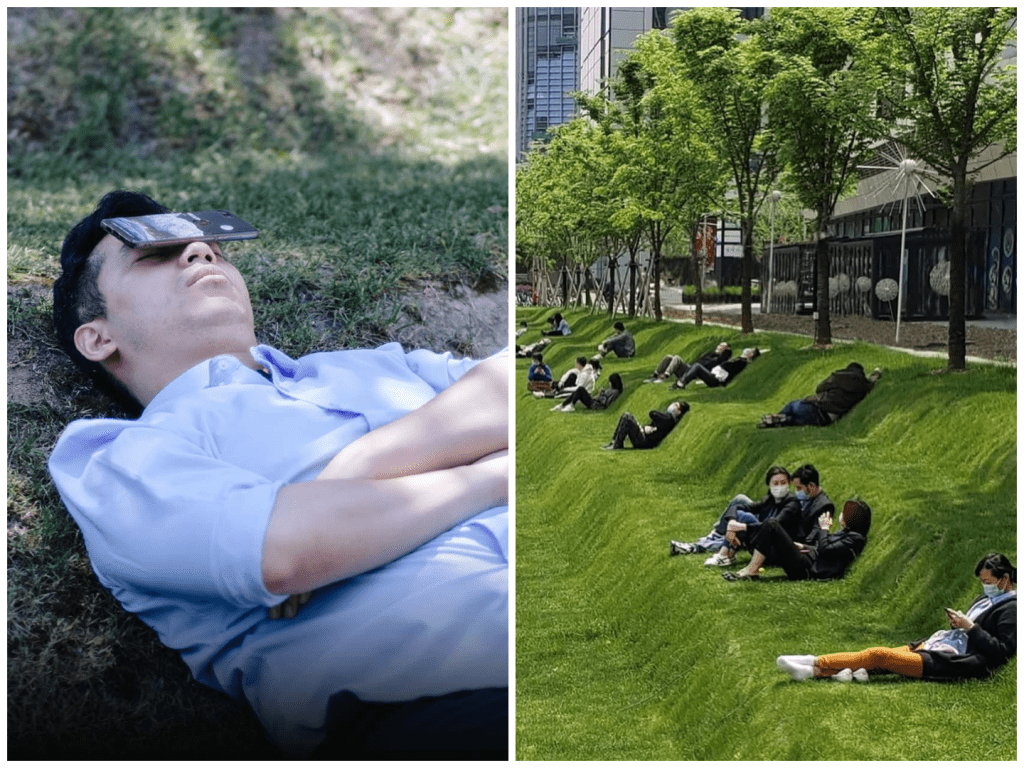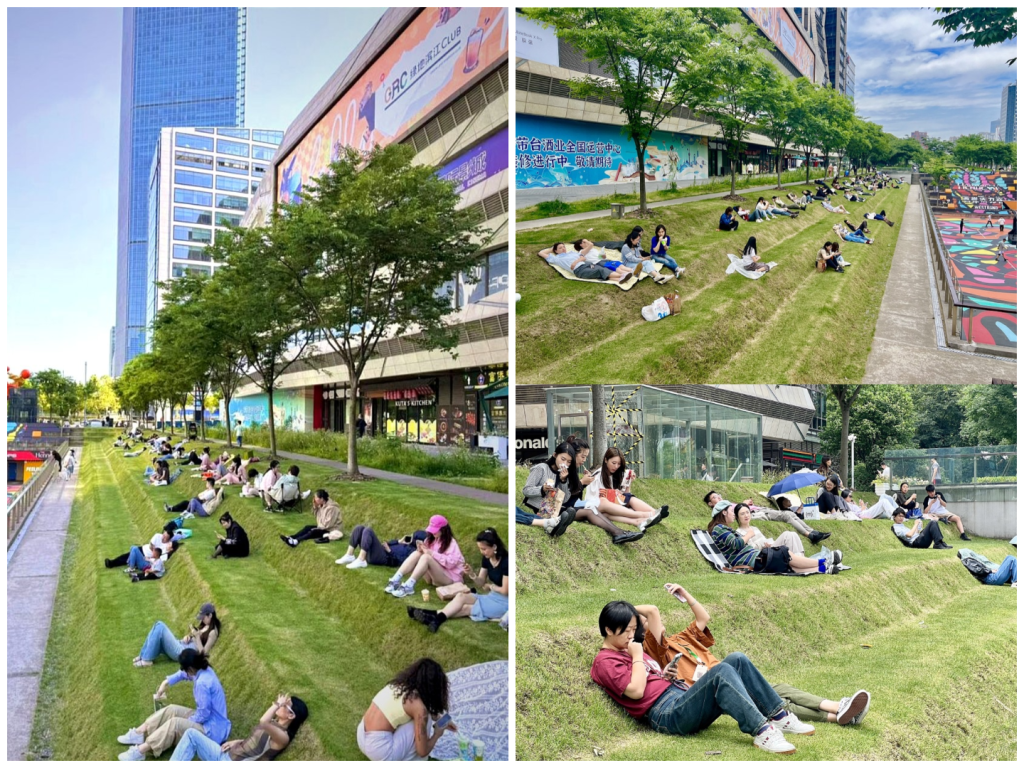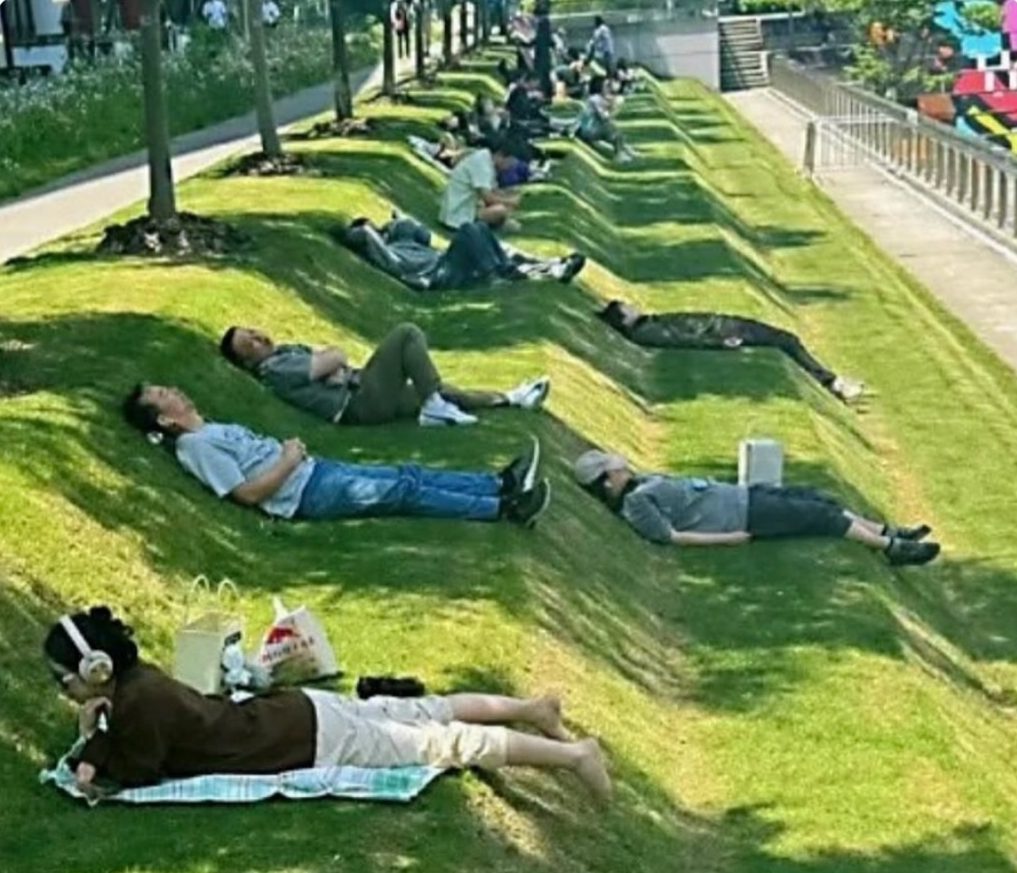Inside Shanghai’s Viral ‘Nap Hill’ Where Office Workers Escape the Grind One Quiet Break at a Time
In the middle of Shanghai’s sleek financial district, where skyscrapers pierce the sky and time always seems to be sprinting forward, there’s an odd little hill that does something unexpected. It invites people to stop. To breathe. To lay down for a moment and just… rest. And somehow, this simple hill—covered in terraced grass and shaded by a few modest trees—has become one of the most talked-about places in the city.

It started with photos. Office workers sprawled on the neatly sculpted green slopes, some with headphones in, some clutching half-finished lunches, and some just dozing off beneath the dappled sunlight. The images flooded Chinese social media platforms like Xiaohongshu and Weibo. People didn’t just like the pictures—they saw something human in them. In a city known for its relentless pace, the sight of people unapologetically taking a midday nap in a public space was quietly revolutionary.
This “nap hill,” as netizens dubbed it, sits in Lujiazui, Shanghai’s towering business district. Just a few steps from offices where deals are made and deadlines loom, the hill is refreshingly democratic. It’s not a VIP lounge or a reserved break area—it’s just grass, shaped into wide tiers, open to anyone. Some bring mats. Some don’t. A few lean against the slope to read. Many just close their eyes.
If you’ve never been to Shanghai, it’s hard to grasp just how rare a moment of quiet can be. The city is electrifying—full of neon lights, nonstop traffic, buzzing conversations, and a pulse that never slows. Even parks in the city are often busy with dancing groups, tai chi sessions, and community events. So when a place like this hill offers nothing but silence, shade, and a soft patch of earth, it almost feels sacred.
No one really knows who first started lying down there. Maybe it was just someone too tired to keep sitting at their desk. Maybe they wandered out with a sandwich and stayed longer than planned. But what’s clear is that once the habit caught on, it resonated. Before long, dozens of people were showing up around noon every day to claim a spot. Some come alone. Others meet friends and quietly chat. It’s the kind of informal ritual that doesn’t need an invitation—just the need for a break.

The hill itself isn’t grand or ornamental. It wasn’t designed as a monument or a tourist attraction. But the terraced shape naturally forms recliners out of the earth, and the tree canopy overhead filters the light just enough to make everything feel softer. On hot days, the breeze coming through the buildings nearby brings a little relief. On colder days, people still show up, bundled in coats, leaning back on their elbows and watching the clouds.
This tiny slice of nature amid concrete and steel might not look like much, but it represents something powerful—especially in modern cities where burnout has become a badge of honor. For years, workplace culture in many parts of Asia has been tied to extreme discipline, long hours, and a general avoidance of public rest. Taking a nap in public, especially while wearing work clothes, might once have been considered unprofessional or lazy. But the tide is turning.
When the photos of Shanghai’s nap hill went viral, the comments weren’t mocking. They were filled with admiration, humor, and even envy. People from other cities started asking, “Why don’t we have something like this?” In a world of tight schedules and rigid expectations, the idea of having a peaceful, communal place to simply lie down during lunch feels radical—and oddly overdue.
Interestingly, the local authorities confirmed that the hill is indeed public and free for anyone to use. It’s not monitored or restricted, and there are no signs asking people to move along. In fact, it’s become a kind of unofficial symbol for healthier urban living. Media outlets picked up the story, and suddenly the tiered lawn had an identity of its own. A few outlets even called it “the most relaxing place in China’s busiest district.”
But what really makes the hill special isn’t just its location or shape—it’s the people who use it. The office workers who bring their tired bodies there every afternoon aren’t just looking for a break; they’re making a quiet statement. That it’s okay to pause. That being busy doesn’t have to mean being exhausted. That a little patch of grass can offer more peace than a whole luxury spa if it’s shared with good intentions.
Some people now pack lunches just for the hill. Others bring books or sit cross-legged with their laptops. A few simply stretch out and sleep. The image of rows of adults napping like kindergartners in the sunshine has an almost poetic charm. It reminds us that no matter how advanced our cities become, we still crave simple pleasures—soft grass, warm light, the sound of rustling trees.
Maybe that’s why this story touched so many people. It’s not just about a lawn in Shanghai. It’s about how we live in cities around the world. It’s about slowing down, even just for a moment, to listen to our bodies. It’s about redefining what productivity means and realizing that sometimes, the most valuable thing you can do is nothing at all.
And maybe—just maybe—if more places had nap hills, the world would feel a little less frantic. We might work just as hard, but we’d also remember to rest. To close our eyes. To feel the earth. And in doing so, we’d be reminded of what it means to be human, even in the middle of a megacity.

Daniel Reed is a curious mind with a passion for breaking down how the world works. With a background in mechanical engineering and digital media, he turns complex ideas into easy-to-understand articles that entertain and inform. From vintage tools and modern tech to viral internet debates and life hacks, Daniel is always on the hunt for the “why” behind the everyday. His goal is simple: make learning feel like scrolling through your favorite feed — addictive, surprising, and fun.
